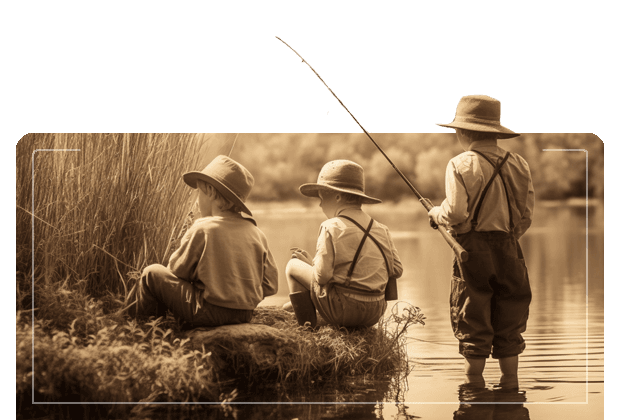Beginner’s Guide: Your First Fishing Trip in Carolina Beach
With its pristine shores, warm climate, and exceptional fishing opportunities, Carolina Beach is a destination that captures the hearts of those seeking tranquility, adventure, and nature’s bounty. This article aims to be your comprehensive guide, taking you from a novice to an adept angler ready for your first fishing trip in this coastal paradise. You will learn about the types of fish you can expect to catch, when the best times to fish are, what equipment you’ll need, licensing requirements, local regulations, and tips for ensuring a successful trip. Not only will this guide cover the practical aspects of fishing in Carolina Beach, but it will also give you a glimpse into the vibrant fishing culture and community that thrives in this area.
Let’s dive into this world of serene waves, baiting hooks, and most importantly, the thrill of reeling in your first catch at Carolina Beach.
Table of Contents
- Getting to Know the Waters
- When to Fish
- Gear and Equipment
- Fishing Licenses and Regulations
- Best Fishing Spots in Carolina Beach
- Fishing Techniques
- Safety and Conservation
- Final Thoughts
- Sources
1. Getting to Know the Waters
Carolina Beach, situated along the North Carolina coastline, is nestled in a region renowned for its rich marine biodiversity. This beachside destination serves as a gateway to the sprawling Atlantic Ocean, providing access to a variety of fishing environments such as inshore waters, offshore waters, surf, and pier fishing locales.
Inshore fishing, typically within 9 miles from the coast, allows anglers to target species thriving in shallow waters. This zone is typically rich with estuaries, bays, and other coastal structures that are home to Red Drum, Flounder, and Spotted Sea Trout. Understanding the underwater topography—like the locations of oyster beds, grass flats, and drop-offs—can help you find these species, as they often congregate in these areas for food and protection.
Offshore or deep sea fishing, on the other hand, takes you beyond the coastline into the open ocean, where you’ll have the chance to catch larger species that inhabit deeper waters. When you venture out into the blue, you can expect to encounter species such as King Mackerel, Mahi Mahi, and even Sailfish.
Surf fishing from the shores of Carolina Beach also offers a unique angling experience. As the Atlantic waves crash onto the sandy beaches, you can catch species like Pompano, Whiting, and even the occasional Red Drum or Flounder. Paying attention to tide times and surf conditions can greatly increase your success rate.
Lastly, pier fishing is an excellent option, especially for beginners. The Carolina Beach Fishing Pier extends out into the water, providing an easy opportunity to fish deeper waters without a boat. Here, you might find a mix of inshore and offshore species, including Spanish Mackerel, Bluefish, and various types of sharks.
Understanding the species that inhabit these diverse environments, along with their feeding and migration patterns, can significantly enhance your fishing experience. Successful angling often hinges on your ability to ‘think like a fish’, predicting where they will be and when. From the quiet inlets to the roaring offshore waters, the seascape surrounding Carolina Beach offers a dynamic and rewarding fishing adventure.

2. When to Fish
The fishing calendar at Carolina Beach is lively and varied, with different species being more prevalent and active at different times of the year. It’s essential to understand these cycles as they can have a considerable impact on your fishing experience.
In the spring months, usually from March to May, Red Drum begin to appear in large numbers. They are followed closely by Speckled Trout and Flounder. Spring is also the time when the much-anticipated Blue Crab season starts. This period offers diverse fishing opportunities, with a good mix of inshore species readily available.
As we move into summer (June through August), the inshore waters continue to be productive, particularly for Flounder. But the main attraction during these warm months is the arrival of Spanish Mackerel and King Mackerel closer to the shore. For offshore enthusiasts, summer marks the peak season for Mahi Mahi, an exciting game fish that offers a thrilling fight.
The autumn season (September to November) in Carolina Beach sees a fantastic Red Drum run, where large “bull” Red Drum migrate through the region. It’s also a good time for catching Speckled Trout. Offshore, Wahoo and King Mackerel continue to provide good catches.
Winter (December to February) may be a quieter season for some species, but it’s the perfect time for targeting Spotted Sea Trout. Meanwhile, offshore anglers can continue to enjoy good catches of Wahoo and Bluefin Tuna.
In addition to the seasons, the time of day also plays a significant role in fishing success. Early morning and late evening, often referred to as the “golden hours,” are typically the best times to fish as many species are more active during these cooler parts of the day. The phase of the moon can also impact fishing, with many anglers believing that fishing around the full moon and new moon can be particularly productive.
Remember that these are general guidelines and that local conditions can influence fish movements and feeding habits. Local fishing reports can be an excellent resource for staying up-to-date with the latest information about what’s biting and when.
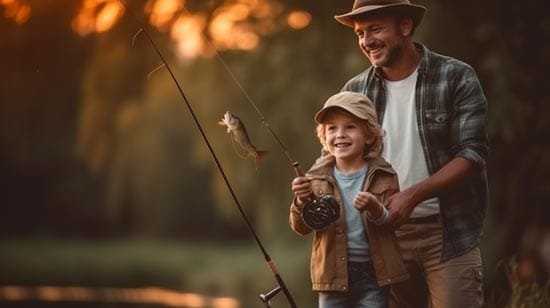
3. Gear and Equipment
Entering the world of fishing means getting acquainted with a variety of gear and equipment. Here’s a closer look at some essential items you’ll need for your first fishing trip to Carolina Beach.
Rod and Reel:
For beginners, a spinning reel and rod combo is an excellent choice. These are versatile, easy to use, and suitable for different types of fishing. When fishing in saltwater, ensure that your rod and reel are corrosion-resistant.
Fishing Line:
Monofilament line is a good all-around choice for saltwater fishing. However, consider also keeping a braided line, which is thinner and stronger, particularly useful when fishing in deep waters or areas with heavy cover.
Hooks:
You’ll need a variety of hooks for different species. Circle hooks are an excellent choice for conservation-minded anglers as they are designed to hook fish in the mouth, reducing the risk of injury.
Sinkers and Weights:
These help your bait reach the desired depth. Their weight should be chosen based on the current and depth of your fishing spot.
Baits and Lures:
Live bait, such as shrimp, mullet, or menhaden, can be very effective. Artificial lures, including jigs, spoons, and soft plastics, are also popular and can be particularly useful when live bait isn’t available.
Fishing Tackle Box:
A good tackle box helps to keep all your gear organized and within easy reach. It should have enough compartments for your hooks, lures, lines, and other small items.
Fishing Pliers:
These are essential for unhooking fish and cutting lines. Choose a pair that’s made from rust-resistant material.
Cooler:
A cooler serves a dual purpose. It can be used to store your catch and to keep your drinks and snacks cool.
Clothing:
Comfortable clothing suited to the weather is essential. Light, breathable fabric is advisable for the summer months, while layers are key for cooler days. Waterproof footwear can help keep your feet dry, especially when surf fishing.
Hat and Sunglasses:
Protecting yourself from the sun is crucial. A hat and sunglasses will protect your head and eyes from harmful UV rays.
Sunscreen:
Always apply sunscreen before heading out to fish. Choose one that’s water-resistant with a high SPF rating.
First Aid Kit:
Safety should always be a priority. Keep a basic first aid kit on hand to treat minor injuries or bites.
Remember, it’s not necessary to have every piece of gear available when starting. Basic equipment will suffice for your first fishing trips. As you gain experience and get to know your preferences, you can gradually add to your gear.
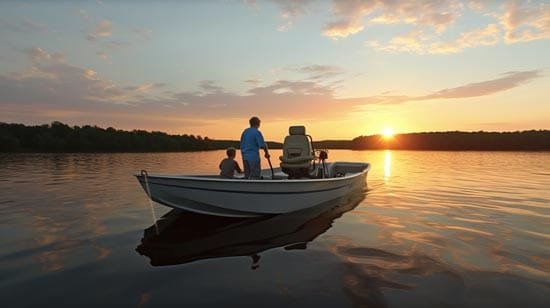
4. Fishing Licenses and Regulations
Respecting regulations and acquiring the necessary licenses is an integral part of fishing. They serve to preserve marine resources and ensure that fishing opportunities continue to be available for future generations.
In Carolina Beach, the North Carolina Wildlife Resources Commission mandates that anyone aged 16 or older must have a Coastal Recreational Fishing License (CRFL) to fish in coastal waters. This includes fishing from the shore, a boat, a pier, or diving. The license is also required for cast netting, crabbing, and clamming.
There are different types of CRFLs to cater to a variety of needs, from a 10-day license for tourists or short-term visitors to an annual license for residents and regular fishers. Licenses can be purchased online, at a wildlife service agent, or by phone.
In addition to licensing, anglers must be familiar with local fishing regulations, which include size limits, bag limits, and seasons for various species. Size limits dictate the minimum or maximum size of a fish that can be legally kept, measured from the tip of the snout to the end of the tail. Bag limits are the maximum number of a particular species you can keep in a day, and seasons designate when certain species can be legally caught. These regulations may change from year to year based on fish populations and ecological studies.
Certain areas may also have specific rules or restrictions about fishing methods and gear. For example, some places may prohibit the use of certain types of bait or fishing tackle.
It’s essential to respect these rules, not only to avoid fines and penalties but also to contribute to the sustainable use of marine resources. Being a responsible angler means doing your part in ensuring that the rich fishing heritage of Carolina Beach can be enjoyed by generations to come.
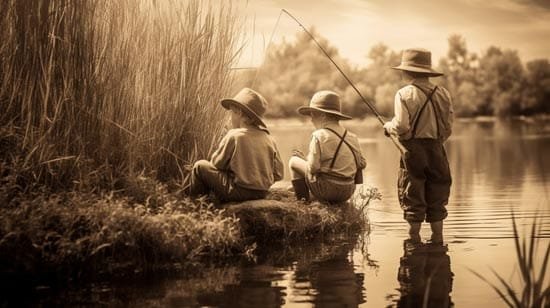
5. Best Fishing Spots in Carolina Beach
One of the best parts of fishing in Carolina Beach is the diverse range of environments available to anglers. Whether you prefer surfcasting from the sandy shoreline, launching a kayak into the inlets, or casting a line from the town’s historic fishing pier, there are abundant opportunities to hook into a great catch. Here are some of the best spots to consider:
Carolina Beach Fishing Pier:
This classic pier, also known as the Northern Extension, is a staple of Carolina Beach. Extending into the Atlantic, it provides a great opportunity to hook into species typically found further offshore without needing a boat. The pier also has a tackle shop on site for any gear needs.
Freeman Park:
Located on the northern end of Carolina Beach, Freeman Park is a popular spot for surf fishing. The park’s extensive shoreline provides ample space for anglers, and the surf here is known for its variety of species, including Red Drum, Flounder, and Pompano.
Carolina Beach State Park:
With a marina and access to the Cape Fear River, Carolina Beach State Park offers excellent fishing opportunities. Anglers can target a variety of species, including Sea Trout, Flounder, and Tarpon. Plus, the scenic backdrop of the park adds to the overall fishing experience.
Masonboro Inlet:
A short boat ride south of Carolina Beach, Masonboro Inlet is a prime spot for inshore fishing. The inlet and the adjacent Masonboro Island are home to Red Drum, Flounder, and Speckled Trout. The inlet also provides access to offshore fishing grounds.
Snow’s Cut:
This manmade waterway connects the Intracoastal Waterway (ICW) with the Cape Fear River and is a well-known local fishing spot. The variety of structure here—drop-offs, channels, and submerged vegetation—attracts a plethora of species, including Sheepshead, Black Drum, and Flounder.
Zeke’s Island Reserve:
Situated to the south of Carolina Beach, this National Estuarine Research Reserve is a rich habitat teeming with marine life. Its calm waters are a great spot for kayak fishing, targeting species like Red Drum, Flounder, and Trout.
Regardless of your choice, remember that the best fishing spot often depends on the tide, weather, time of day, and season. Checking local fishing reports can be a good way to determine where the fish are biting.
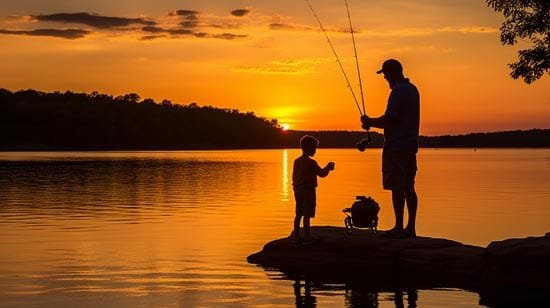
6. Fishing Techniques
There are numerous fishing techniques that you can employ on your first fishing trip to Carolina Beach. As a beginner, you might want to start with the basics and gradually expand your skills as you become more comfortable with your gear and understand the habits of the fish. Here are some techniques you might want to try:
Casting:
This is the most common technique for beginners. It involves casting your line out into the water and waiting for a fish to bite. It’s simple, requires minimal equipment, and can be used in most fishing environments.
Bottom Fishing:
This technique is used when fish are located near the bottom of the water column. Your bait is weighted down to reach the bottom and attract fish. This method is commonly used when pier fishing or boat fishing.
Drifting:
This technique involves letting your boat drift with the current and wind while your line is in the water. It covers a wider area and can be effective for offshore fishing, targeting species like King Mackerel or Mahi Mahi.
Trolling:
A more advanced technique, trolling involves trailing baited lines behind a slowly moving boat. It’s a popular method for catching larger species offshore, such as Marlin or Sailfish. This technique requires specialized equipment and knowledge of boat handling.
Surfcasting:
This technique is used for beach fishing. It involves casting your line from the shore into the surf. The objective is to get your bait or lure as far out as possible to reach the fish feeding in the breaking waves.
Fly Fishing:
This technique requires a bit more skill and involves casting a lightweight artificial fly that imitates the natural food of the fish. While more commonly associated with freshwater fishing, fly fishing can also be effective in saltwater environments, especially in calm inlets or estuaries.
Jigging:
This involves moving your lure or bait up and down in the water column to imitate a wounded fish. It’s an active technique that can be very effective when you know fish are below you, such as when fishing from a pier or a boat over a known fish habitat.
Remember that each fishing technique requires practice to master. As a beginner, don’t be discouraged if you don’t succeed right away. Patience, practice, and a willingness to learn are all part of becoming a skilled angler.
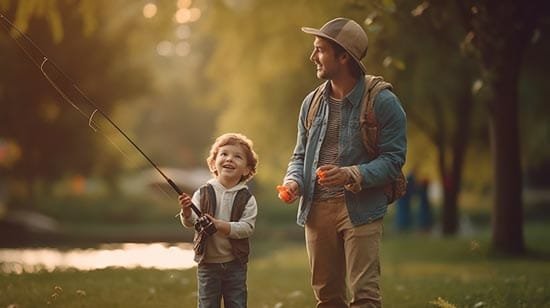
7. Safety and Conservation
Safety and conservation are paramount when it comes to fishing. Here are some key points to consider:
Safety First:
Ensure you have the proper gear, including a life jacket if you’re fishing from a boat or a kayak. Be aware of weather conditions and tides, particularly when surf fishing or venturing offshore. Keep a first aid kit handy, and always let someone know where you’re going and when you plan to return.
Sun Protection:
Protect yourself from the sun’s harmful rays by wearing a hat, sunglasses, and applying sunscreen with a high SPF. Stay hydrated by drinking plenty of water.
Handle Fish with Care:
If you catch a fish that you’re not planning to keep, handle it as little as possible and release it back into the water gently. Wet your hands before handling the fish to minimize damage to its protective slime coat.
Respect Size and Bag Limits:
These regulations are put in place to help manage fish populations and ensure their long-term sustainability. Keep a measuring device handy to ensure your catch meets the minimum size requirements, and only keep what you plan to use.
Tread Lightly:
Be respectful of the environments where you fish. Avoid disturbing wildlife, trampling vegetation, or leaving trash behind. If you bring it in, make sure to bring it out.
Join a Conservation Effort:
There are numerous organizations dedicated to preserving marine environments and promoting responsible fishing practices. Consider joining or contributing to these organizations.
Educate Others:
Share good fishing practices with others, especially young or novice anglers. By doing so, you help ensure the future of the sport.
Remember, fishing is not just about the catch; it’s also about enjoying nature and respecting the environments where fish live. Being a responsible angler is about understanding that our actions have a direct impact on the health of the ecosystem and doing our part to protect it for future generations.
Final Thoughts
Embarking on your first fishing trip in Carolina Beach is not just about the catch—it’s about immersing yourself in the experience. The serenity of the beach, the rhythmic ebb and flow of the tides, and the joy of connecting with nature add depth to your fishing journey. As a beginner, your focus should be on learning and enjoyment. Celebrate each catch, no matter the size, and learn from every unsuccessful attempt. Patience, perseverance, and respect for the marine life and the ocean are the hallmarks of a successful angler.
Sources
- North Carolina Wildlife Resources Commission. Coastal Recreational Fishing License Types and Fees.
- North Carolina Division of Marine Fisheries. Fish Size and Bag Limits.
- Carolina Beach State Park. Fishing.
- National Oceanic and Atmospheric Administration. Fishwatch: Atlantic Mackerel.
- Recreational Boating & Fishing Foundation. How to Fish.
- National Park Service. Leave No Trace.
Remember, every fishing trip contributes to your journey as an angler. So pack your gear, apply for your license, and get ready to create unforgettable memories on Carolina Beach. Whether you are drawn by the thrill of the catch or the calm of the ocean, fishing at Carolina Beach promises an experience that you will cherish.
I research and report on fishing, fishing gear/equipment, survival topics, and marketing for outdoors related businesses. I assist here on CB Fishing as the editor. Articles may contain AI researched content. All content is published for education and entertainment purposes only, NOT LIFE, HEALTH, SURVIVAL, FINANCIAL, BUSINESS, LEGAL OR ANY OTHER ADVICE. Learn more about Mark Mayo
- Guide to starting a Fishing Charter business
- Carolina Beach Local Fishing Reports #94RT
- Strategic Fishing Charter Marketing
- Carolina Beach Local Fishing Reports #83RT
- Carolina Beach Local Fishing Reports #73RT
- East Coast Got Em On King Mackerel Tournament 2023
- 2023 Recreational Flounder Season Announced
- Carolina Beach Local Fishing Reports #63RT
- Carolina Beach Fishing Reports #53RT
- King Mackerel Fishing in Carolina Beach, NC: A Comprehensive Guide
- Current Fishing Report and Trends and new “Big Red” Artwork
- Surf Fishing in Carolina Beach, North Carolina
- What Do Redfish Eat? A Comprehensive Guide
- Early Spring 2023 Carolina Beach Fishing Report
- My Top 10 fish to catch at Carolina Beach, NC!
- What are the Most Popular Fishing Spots in Wilmington, NC?
- How to surf fish for bull reds
- Flounder in the Cape Fear River
- Striped bass in the Cape Fear River
- What’s so special about The Cape Fear River?
- Top 4 fish to target in Carolina Beach, NC
- East Coast Got Em On King Mackerel Tournament starts to wind down
- 2022 ranking results – East Coast Got Em On King Mackerel Tournament
- Flounder Season shortens for 2022

